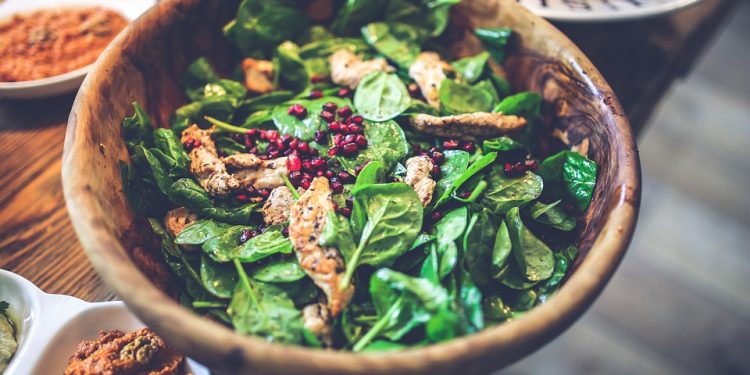Intermittent fasting (IF) isn’t a diet, but rather an eating pattern. It cycles between periods of eating and voluntary fasting on a regular schedule. Think of it as when you eat, not what you eat (though focusing on healthy food choices during your eating windows is still crucial for overall health).
Why Intermittent Fasting? Understanding the Potential Benefits
IF has gained significant popularity due to its potential benefits, including:
- Weight Loss: By restricting your eating window, you naturally consume fewer calories, leading to weight loss. IF can also boost metabolism.
- Improved Insulin Sensitivity: Studies suggest IF can improve insulin sensitivity, helping regulate blood sugar levels. This is particularly beneficial for individuals at risk of type 2 diabetes.
- Cellular Repair: During fasting periods, your body initiates cellular repair processes like autophagy, where it removes damaged cells.
- Brain Health: IF may support brain health by increasing the production of brain-derived neurotrophic factor (BDNF), which promotes neuron growth and survival.
- Simplicity: Unlike strict diets with complex rules, IF is relatively simple to follow, making it a sustainable lifestyle change for many.
Important Note: IF is not suitable for everyone. Consult your doctor before starting IF, especially if you have any underlying health conditions, are pregnant, breastfeeding, or have a history of eating disorders.
Choosing the Right Intermittent Fasting Plan for You
Several IF methods exist, each with its own eating and fasting windows. Here’s a breakdown of the most popular options:
1. The 16/8 Method (Leangains Protocol)
This is arguably the most popular and beginner-friendly IF method. It involves fasting for 16 hours each day and restricting your eating window to 8 hours. For example, you might eat between 12 pm and 8 pm and fast from 8 pm to 12 pm the next day.
Example 16/8 Schedule:
- 12:00 PM: First meal (lunch)
- 4:00 PM: Snack
- 7:00 PM: Dinner
- 8:00 PM – 12:00 PM (next day): Fasting period
The 16/8 method is relatively easy to incorporate into your daily routine and allows for flexibility in meal timing.
2. Eat-Stop-Eat
This method involves fasting for 24 hours once or twice per week on non-consecutive days. For instance, you might eat dinner on Monday and then not eat again until dinner on Tuesday.
Example Eat-Stop-Eat Schedule:
- Monday Dinner: Normal meal
- Tuesday: Fasting until dinner
- Tuesday Dinner: Normal meal
This method is more demanding than the 16/8 method and may not be suitable for beginners. It’s crucial to stay hydrated during your fasting days.
3. The 5:2 Diet
With the 5:2 diet, you eat normally for five days of the week and restrict your calorie intake to 500-600 calories on the other two non-consecutive days. These low-calorie days essentially mimic fasting.
Example 5:2 Diet Schedule:
- Monday – Friday: Normal eating (balanced diet)
- Saturday: Restricted calorie intake (500-600 calories)
- Sunday: Normal eating (balanced diet)
The 5:2 diet is a good option for those who find full-day fasting too challenging.
4. Alternate-Day Fasting (ADF)
ADF involves fasting every other day. On fasting days, you typically consume around 500 calories or completely abstain from food. On eating days, you can eat normally.
Example ADF Schedule:
- Monday: Normal eating
- Tuesday: Fasting (or very low calorie intake)
- Wednesday: Normal eating
- Thursday: Fasting (or very low calorie intake)
- Friday: Normal eating
ADF is one of the more extreme forms of IF and requires careful planning and monitoring. It’s generally not recommended for beginners.
Choosing the Best Method for You
The best IF method depends on your individual lifestyle, preferences, and goals. Start with a more manageable method like the 16/8 method and gradually progress to more challenging methods if desired. Listen to your body and adjust as needed.
A Step-by-Step Guide to Starting Intermittent Fasting
Here’s a step-by-step guide to help you start intermittent fasting safely and effectively:
- Consult Your Doctor: This is the most important step. Discuss IF with your doctor to ensure it’s safe for you, especially if you have any pre-existing health conditions.
- Choose Your Method: Select an IF method that aligns with your lifestyle and preferences. The 16/8 method is often the best starting point.
- Start Gradually: Don’t jump straight into a strict fasting schedule. Gradually increase your fasting window over time. For example, start with a 12-hour fast and gradually increase it to 16 hours.
- Stay Hydrated: Drink plenty of water, black coffee, or unsweetened tea during your fasting periods. These beverages can help suppress hunger and keep you hydrated.
- Plan Your Meals: During your eating window, focus on consuming nutrient-dense foods like fruits, vegetables, lean protein, and whole grains. Avoid processed foods, sugary drinks, and excessive amounts of unhealthy fats.
- Listen to Your Body: Pay attention to how your body feels during fasting. If you experience any negative side effects, such as dizziness, fatigue, or headaches, adjust your fasting schedule or consult your doctor.
- Be Consistent: Consistency is key to achieving the benefits of IF. Stick to your chosen fasting schedule as much as possible.
- Track Your Progress: Keep a journal to track your weight, measurements, and energy levels. This will help you monitor your progress and stay motivated.
What to Eat (and Avoid) During Your Eating Window
While IF focuses on when you eat, the what is still important. Prioritize whole, unprocessed foods during your eating window. Here’s a general guideline:
Foods to Focus On:
- Fruits and Vegetables: Apples, bananas, berries, broccoli, spinach, kale, etc.
- Lean Protein: Chicken breast, fish, beans, lentils, tofu.
- Whole Grains: Oats, quinoa, brown rice, whole-wheat bread.
- Healthy Fats: Avocado, nuts, seeds, olive oil.
Foods to Limit or Avoid:
- Processed Foods: Fast food, packaged snacks, processed meats.
- Sugary Drinks: Soda, juice, sweetened tea and coffee.
- Refined Carbs: White bread, white rice, pastries.
- Excessive Unhealthy Fats: Fried foods, processed snacks.
Staying Hydrated During Fasting
Hydration is crucial during fasting periods. Drink plenty of water throughout the day. You can also consume calorie-free beverages like:
- Water: The best option for hydration.
- Black Coffee: Can help suppress appetite and boost energy levels (without added sugar or cream).
- Unsweetened Tea: Herbal teas are a great choice.
- Sparkling Water: A refreshing alternative to plain water.
Avoid sugary drinks or anything with added calories, as this will break your fast.
Potential Side Effects and How to Manage Them
Some people may experience side effects when starting IF, particularly in the initial stages. Common side effects include:
- Hunger: This is the most common side effect, especially during the first few days. Drink plenty of water and choose filling foods during your eating window.
- Headaches: Dehydration or low blood sugar can cause headaches. Stay hydrated and ensure you’re getting enough electrolytes.
- Fatigue: Your body may need time to adjust to the new eating schedule. Get enough sleep and avoid strenuous activities during the initial stages.
- Irritability: Low blood sugar can sometimes lead to irritability. Choose complex carbohydrates during your eating window to stabilize blood sugar levels.
- Constipation: Dehydration can contribute to constipation. Drink plenty of water and eat fiber-rich foods during your eating window.
If you experience persistent or severe side effects, consult your doctor.
Long-Term Sustainability of Intermittent Fasting
One of the key advantages of IF is its potential for long-term sustainability. Unlike restrictive diets that are difficult to maintain, IF is a more flexible eating pattern that can be adapted to your individual lifestyle.
However, long-term success with IF requires a few key factors:
- Consistency: Stick to your chosen fasting schedule as much as possible.
- Balanced Diet: Focus on consuming nutrient-dense foods during your eating window.
- Flexibility: Don’t be afraid to adjust your fasting schedule as needed. Life happens, and it’s okay to deviate from your plan occasionally.
- Patience: It takes time for your body to adapt to IF. Be patient and don’t get discouraged if you don’t see results immediately.
Conclusion
Intermittent fasting can be a powerful tool for weight loss, improved health, and overall well-being. By understanding the different methods, starting gradually, and focusing on a balanced diet, you can successfully incorporate IF into your lifestyle and reap its potential benefits. Remember to consult your doctor before starting IF, and listen to your body throughout the process. With the right approach, IF can be a sustainable and effective way to improve your health and achieve your fitness goals.
Frequently Asked Questions (FAQs) About Intermittent Fasting
Q: Is intermittent fasting safe?
A: For most healthy adults, intermittent fasting is generally considered safe. However, it’s crucial to consult your doctor before starting, especially if you have any underlying health conditions, are pregnant, breastfeeding, or have a history of eating disorders.
Q: Can I drink coffee during my fasting window?
A: Yes, you can drink black coffee during your fasting window. Just be sure to avoid adding sugar, cream, or any other additives that contain calories.
Q: Will intermittent fasting make me lose muscle mass?
A: If you’re consuming enough protein and calories during your eating window and engaging in regular strength training, intermittent fasting is unlikely to cause significant muscle loss. Prioritize protein intake during your meals.
Q: What if I get hungry during my fasting window?
A: Hunger is a common side effect, especially in the initial stages. Drink plenty of water, black coffee, or unsweetened tea to help suppress your appetite. You can also try distracting yourself with other activities.
Q: How long does it take to see results from intermittent fasting?
A: The time it takes to see results varies depending on individual factors like your metabolism, diet, and activity level. Some people may see noticeable changes within a few weeks, while others may take longer. Consistency is key.
Q: Can I exercise while intermittent fasting?
A: Yes, you can exercise while intermittent fasting. However, it’s important to listen to your body and avoid strenuous activities if you’re feeling fatigued. Some people prefer to exercise during their eating window.
Q: What should I do if I accidentally break my fast?
A: Don’t panic! Just get back on track with your fasting schedule as soon as possible. One slip-up won’t derail your progress.
Q: Is intermittent fasting suitable for women?
A: Yes, intermittent fasting can be suitable for women, but it’s important to be mindful of hormonal fluctuations and potential side effects. Some women may find that shorter fasting windows are more manageable. Consulting with a healthcare professional is always recommended.
Q: Can I do intermittent fasting every day?
A: Yes, you can do intermittent fasting every day, especially with methods like the 16/8 method. However, it’s important to listen to your body and take rest days when needed. Some people prefer to cycle between different IF methods or take breaks from IF altogether.
Q: Where can I find more information about intermittent fasting?
A: Reputable sources of information include scientific studies, articles from healthcare professionals, and books written by experts in the field. Be sure to evaluate the credibility of the source and consult your doctor before making any changes to your diet or lifestyle.












